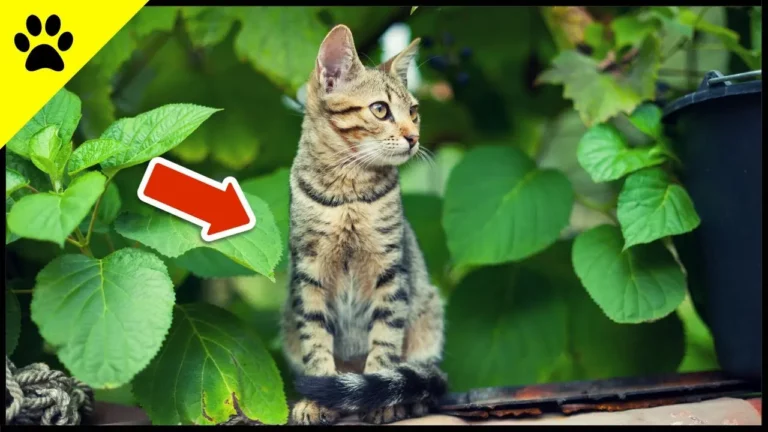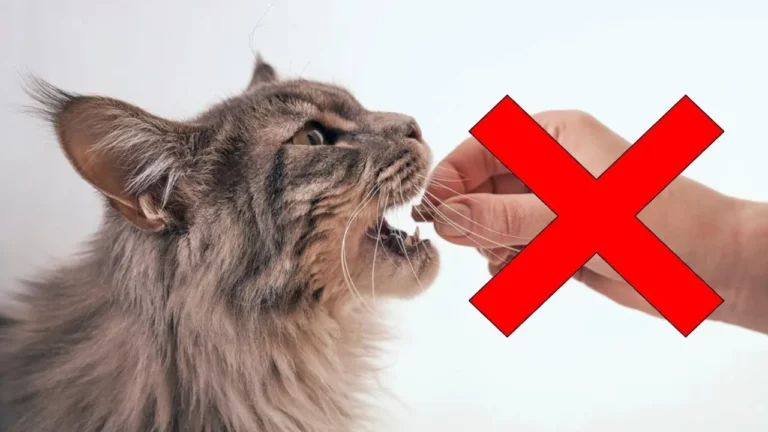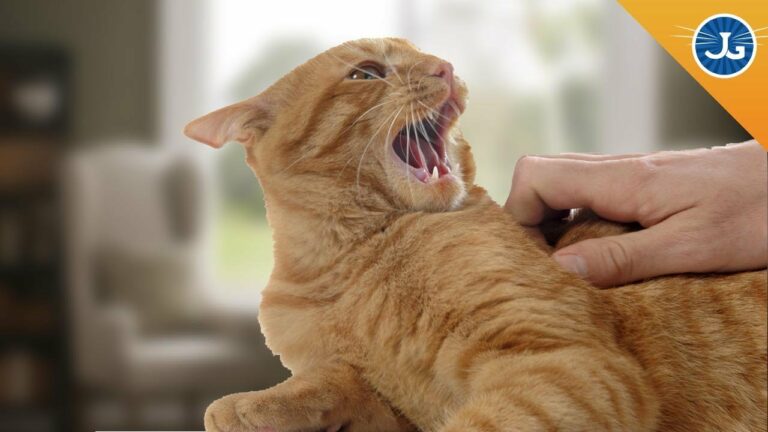Should You Rescue Feral Cats? Challenges & Ethical Considerations
As a passionate advocate for animal welfare, I’ve often pondered the complexities of rescuing feral cats.
It’s a topic that stirs a mix of emotions and questions, especially when considering that about 25% of individuals find their feline friends outdoors.
These cats, whether they’ve wandered away from a previous indoor life or were born in the wild, present a unique challenge when it comes to rescue and adoption.
Understanding the distinction between a stray
While the former may adapt to indoor life with patience and care, the latter, accustomed to the freedom of the outdoors, might never fully adjust to living inside.
It’s a heart-wrenching realization that not every feral
In my journey through the world of
The Challenge of Adoption
When considering rescuing feral cats, many kind-hearted individuals ponder whether these untamed felines can transition into beloved domestic pets.
The process, layered with complexities, demands an understanding of what these cats truly require to thrive.
Besides, when it comes to feral kittens, the approach shifts, offering a glimmer of hope but also presenting unique challenges.
Can Feral Cats Become Domestic Pets?
In my experience, transitioning a feral
Unlike stray cats, who have likely experienced human interaction and can more easily adapt to indoor life, feral cats live with minimal to no human contact.
Hence, they view humans as potential threats rather than companions.
But, with patience and the right approach, some feral cats can become comfortable around humans, to a point.
Consider the case of Shadow, a feral
Nevertheless, by ensuring he had access to food and a safe distance, Shadow gradually began to acknowledge my presence without immediate fear.
It took months, but he learned to trust me enough to eat nearby, though any attempt at physical contact remained off-limits.
Shadow’s case illustrates that while feral cats might not transform into the cuddly pets we imagine, they can form unique bonds with humans.
Key strategies include:
- Patience: Allowing the
cat to set the pace of interaction. - Consistency: Regular, predictable routines help build trust.
- Safe Space: Providing a sheltered area where the
cat feels secure.
Special Considerations for Feral Kittens
Feral kittens present a different scenario.
If found at a young age, typically under 8 weeks, they’re significantly more adaptable to human interaction and indoor living.
This critical window is when kittens learn social skills, including those involving humans.
When rescuing feral kittens, consider:
- Early Socialization: Introduce them to various people, sounds, and experiences to foster adaptability.
- Health Care: Immediate veterinary assessments, vaccinations, and spaying/neutering are crucial.
- Adoption Readiness: Assess each kitten’s comfort with humans to determine the best timing for adoption.
How Can You Support Feral Cats During Emergencies
Dealing with feral cats, especially during crises, requires understanding, preparation, and immediate action.
Protecting Feral Cats in Extreme Weather
Extreme weather poses significant threats to feral cats.
Be it harsh winters, scorching summers, or stormy seasons, each presents unique challenges.
Hence, knowing how to protect these animals during these times is crucial.
For winters, providing insulated shelters can be a lifesaver.
I’ve found that simple structures, like sturdy boxes lined with straw—not hay or blankets, as these can retain moisture and freeze—offer the warmth feral cats need to survive the cold nights.
Positioning these shelters in quiet, unobtrusive places lessens the risk of unwanted human interference.
An effective example I’ve seen involves a community effort where multiple shelters were distributed in strategic locations, ensuring no
During the summer, ensuring access to fresh water is essential.
Dehydration is a serious risk in high temperatures.
I always place multiple water stations, shaded if possible, around areas feral cats frequent. It’s important to check these daily, as water can evaporate quickly in hot weather.
Besides, providing shaded areas or ensuring the shelters have breathable materials can help guard against heatstroke.
Storms and hurricanes require a proactive approach.
I advise securing outdoor shelters so they’re not blown away.
Also, if possible, create a temporary indoor space, like a garage or shed, where the cats can retreat until the storm passes.
After experiencing a particularly fierce hurricane season, I learned that placing identifying markers on shelters helps to quickly locate and assess them post-storm.
Protecting feral cats in extreme weather isn’t just about survival.
It’s about providing these animals with a sense of security and well-being even though the harsh conditions.
By taking these steps, we not only safeguard their lives but also contribute positively to their quality of life.
Sharing knowledge and resources within your community can amplify these efforts, creating a safer environment for feral cats to thrive, regardless of the weather.
The Ethics of Rescuing Feral Cats
In my years of working with feral cats, I’ve come to understand the depth of consideration needed when approaching the rescue and care of these independent animals.
The ethics surrounding the rescue of feral cats can be complex, blending a mix of compassion, practicality, and environmental awareness.
Let’s jump into these intricacies to help guide those who wish to begin on this noble yet challenging journey.
Considering the Impact on Local Wildlife
One of the first aspects I ponder upon is the impact rescued feral cats have on local wildlife.
Studies have shown that even well-fed cats will hunt, posing a potential threat to small mammals and birds.
Hence, it’s imperative to consider non-lethal methods that protect both the cats and the native wildlife.
For example, implementing a Trap-Neuter-Return (TNR) program effectively reduces the feral
As part of a TNR effort, providing regular feeding stations for these cats can also reduce their need to hunt, indirectly protecting local fauna.
Evaluating the Dangers for Feral Cats in the Wild
Besides, understanding the dangers feral cats face in the wild is crucial.
From my perspective, acknowledging these risks is the first step towards mitigating them.
Feral cats often lead harsh lives, facing threats from larger predators, disease, and starvation.
Also, human activities, such as traffic and urban development, pose additional risks to their safety.
By taking action to rescue feral cats, we not only improve their quality of life but also reduce the pressure on local animal shelters and wildlife rescue organizations.
Simple strategies, such as providing insulated shelters, can make a significant difference in the survival and well-being of these cats during extreme weather conditions.
In my experience, engaging in conversations with neighbors and community members about the benefits of TNR programs and the importance of sterilizing pets can lead to broader community support and understanding.
Educating the public about the challenges feral cats face and the steps we can take to protect them fosters a more compassionate and informed community.
As I reflect on the ethics of rescuing feral cats, I’m reminded of the powerful impact compassion, coupled with informed action, can have.
By balancing our desire to help these animals with a mindful approach to their welfare and the protection of local wildlife, we can create a more harmonious environment for all.
It’s a path that requires patience, dedication, and a deep love for our feline friends and the natural world they inhabit.
How To Manage The Feral Cat Population
In my journey of managing feral
Hence, I’m eager to share insights that I believe can genuinely make a difference.
Managing the feral
For effective feral cat solutions, it’s important to combine these strategies thoughtfully.
Implementing TNR Programs
I’ve found that the cornerstone of controlling the feral
This method involves trapping the cats in a humane way, having them spayed or neutered by a qualified vet, and then returning them to their territory.
A remarkable example of this in action is my experience with a local
But, through persistence and the help of Feral Friends, we successfully trapped and neutered him, drastically improving his quality of life and preventing future litters.
For those interested in starting a TNR program, organizations like Alley
Providing Shelters and Necessary Supplies
Another critical aspect of managing a feral
In my backyard, I’ve constructed several shelters from large, insulated Rubbermaid containers.
These not only keep the cats dry during rainstorms but also provide a cool retreat during blistering summer days.
Also, I ensure there are always fresh bowls of water and food, which I place under a dedicated shelter to protect from the elements.
Offering these basic necessities significantly reduces the stress on these animals, allowing them to lead healthier and more stable lives.
Advocating for Regular Vaccinations
Finally, it’s essential not to overlook the importance of regular vaccinations.
While it’s straightforward for pet cats, feral cats present a unique challenge due to their lack of trust in humans.
Partnering with local veterinarians who understand and are willing to work with feral cats has been a game-changer.
This ensures that the cats in my care receive vaccinations against common diseases, protecting both the colony and the wider community.
Wrapping It Up
Deciding to rescue feral cats is no small feat. It requires a deep understanding of their unique needs and a commitment to their well-being.
My journey with Shadow taught me the importance of patience and the rewards of slowly earning their trust.
By providing insulated shelters, fresh water, and taking proactive measures during emergencies, we can significantly improve the lives of these resilient creatures.
Also, engaging in TNR programs and ensuring they have access to regular vaccinations are essential steps in managing their population and health.
It’s clear that community involvement and support from organizations are pivotal in ensuring the success of these initiatives.
As we consider the ethics and impact of rescuing feral cats, let’s remember the positive change we can bring to their lives and our local ecosystems.






